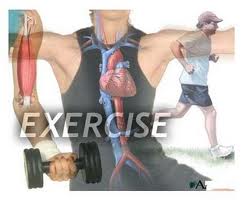A recently released study suggests better cardiovascular fitness at age 18 is associated with lower depression rates in adulthood. Dr. Maria Åberg, MD, PhD, Sahlgrenska Academy, University of Gothenburg, in Sweden, said the correlation can be seen for up to the next 40 years of a person’s life.
This is how Medscape Today reports on the study:
“A proposed mechanism is that physical exercise could reverse the reduced neuronal plasticity that is observed in both depression and bipolar disorders. Previous human studies have shown that a sedentary lifestyle increases the risk of depression, but most of these have been based on interviews with adults and the results have been inconclusive, and we felt that there was a real need for a large study with long follow-up times and objective measures of physical performance,” Dr. Åberg explained.
The researchers carried out a prospective cohort study of all Swedish men born between 1950 and 1987 with no history of mental illness who were enlisted for mandatory military service at the age of 18 years.
When enlisting, all 1,117,292 men were given extensive physical and psychological examinations, including tests of their cardiovascular and muscle fitness.
The men were followed between 1969 and 2008. The researchers used data from the Swedish National Hospital Discharge Register to see how may had received inpatient treatment for depression.
The study showed that the men who performed poorly on the cardiovascular fitness tests at age 18 years were at greater risk of being hospitalized with depression in later life.
After controlling for factors that included body mass index, conscription test center, and familial factors, the hazard ratio (HR) associated with lower cardiovascular fitness at age 18 for serious depression in adulthood was 1.96 (95% confidence interval [CI], 1.71 – 2.23).
There was no such association found for bipolar disorder (HR, 1.11; 95% CI, 0.84 – 1.47).
“Doctors can tell their teenage patients and their parents that the brain needs two types of training, both cognitive challenges and physical exercise,” Dr. Åberg said.



